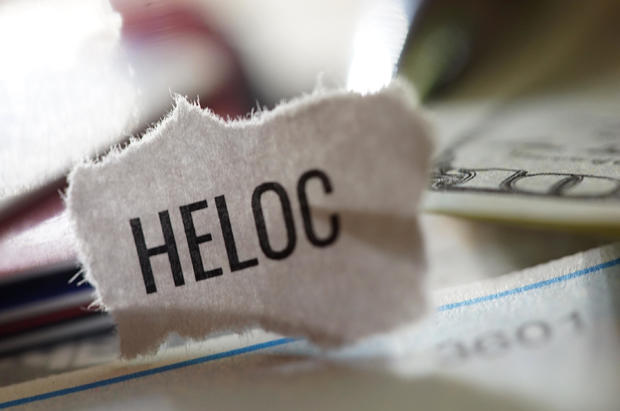Getty Images/iStockphoto
Times are hard for many people. Inflation high, the price upward and many are struggling to make ends meet. In some cases, they may seek financial help elsewhere through loans or other financial products.
For homeowners, tapping into your home equity is also an option. You can do this with a home equity line of credit (HELOC) or you can consider Cash-out refinancing.
But what is the difference between these two options and when is one a better choice than the other? It is important to know the nuances of both to help make an informed decision.
You can easily explore your HELOC options here to learn more
What is a HELOC?
A home equity line of credit allows you to borrow against the equity in your home, but it’s not a loan. Instead, it works like a credit card, allowing you to withdraw as much money as you need over an extended period of time.
most of HELOC interest rates Variables, meaning they get up or down as the index they’re bound to. Typically, you’ll pay interest only during the draw period — the first 10 years of the line of credit, when you can withdraw money — and then make full payments for the next 20 years.
in some cases, HELOCs may be required A balloon payment, meaning your entire balance is due at once (although these are not very common).
What is a cash-out refinance?
A cash-out refinance loan is a type of mortgage refinance. It replaces your existing mortgage loan A new, larger one – one that has a new rate and terms. Then, your new loan is used to pay off the old loan, and you get the difference back in cash.
So, for example, if you have a current mortgage loan with a $200,000 balance and you cash-out refinance into a loan for $300,000, you’ll get $100,000 back after closing.
Check out your refinancing options here to learn more.
When is it best to use a HELOC?
A HELOC is usually a good option if you don’t want to replace your existing mortgage loan. This may be the case if you have a very low interest rate. For example, if you have a current mortgage with a 3.5% rate, you probably don’t want to do a cash-out refinance right now. In that case, you’d trade your 3.5% rate for today’s much higher 6%-plus rate.
“When completing a cash-out refinance, you’re not only taking on new debt, you’re also changing the rate on your existing mortgage balance,” says Matthew Sanford, AVP of mortgage lending at Skyla Federal Credit Union. “If the refinance interest rate is high, it could result in you paying substantially more interest than you would otherwise.”
Obtaining a HELOC allows you to take out a second, completely separate loan with its own interest rate and terms instead of keeping your current mortgage loan (and rate).
Another time you might want to use a HELOC is if you’re not sure how much money you need. This can happen if you are using the funds for a move Reform project Or you just want a financial safety net as we head into a possible recession.
“HELOCs provide additional flexibility,” Sanford says. “Instead of taking a lump sum and paying interest on the full amount immediately, you can borrow funds as you need them – up to your credit limit – and pay interest only on the amount you use.”
Learn more here.
When is it best to use a cash-out refinance?
A cash-out refinance is a good choice If your current mortgage rate is higher than what is being offered today. In this case, refinancing can lower your long-term interest costs.
It’s even better if you’re looking for a fixed rate and payment. HELOCs are almost always adjustable-rate loans, so your interest rate and payments can fluctuate. And with the Federal Reserve raising rates nine times over the past year, there’s a good chance HELOC rates will rise in the near term.
“HELOC rates are at a 17-year high,” said Shmuel Shayowitz, president and chief lending officer of the affiliated fund. “Every time the Federal Reserve raises rates, it raises HELOC rates proportionally.”
Learn more now.
Get help if you need it
Both a HELOC and a cash-out refinance can help you tap into your home equity, but depending on your situation, one may be better (and more affordable) than the other. If you’re not sure which one to choose, talk to a loan officer, mortgage broker or financial advisor. They can help you make the best decision for your unique financial situation.


No Comments
Leave a comment Cancel